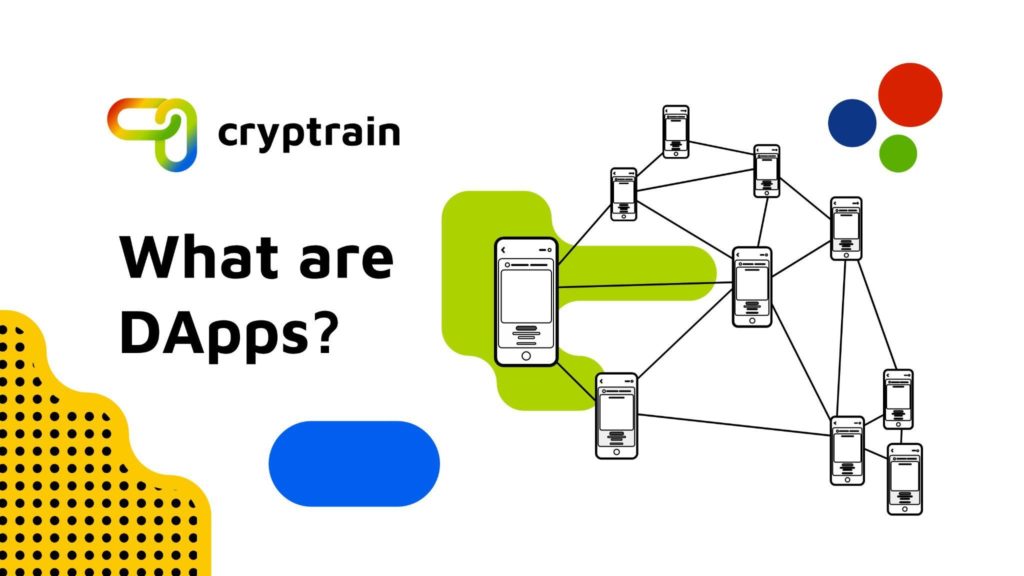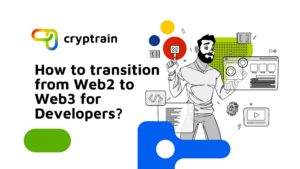
In today’s growing digital world, chances are if you haven’t already at least come across the concept of DApps, well obviously you have now so that all stops here. But if you landed here, chances are you have had some interaction and touch points with Decentralized Applications prior to this encounter. In that case, we’re going to accelerate the conversation and first quickly answer what DApps are exactly. Immediately after, we’ll venture to look deeper into the Decentralized Applications and some of the development aspects. And then once we do that, then we’ll briefly take a look at the differences between DApps and centralized mobile applications.
So First, What are DApps Exactly?
DApps refer to a specific type of software application which is deployed within a decentralized network. DApps, short for Decentralized Application, also refers to Distributed Application, which is a technology that enables Smart Contract functionality experienced by users while engaged on the Ethereum blockchain and networks with similarly based underlying protocol. Decentralized Applications were first hypothesized in 2013 by Ethereum’s co-founder, Vitalik Buterin. Eventually, in 2015 DApps were officially written into the Ethereum technical whitepaper. They were then brought into successful development and made available as a live concept in 2017, when the second-largest decentralized ecosystem next to the Bitcoin network was successfully launched.
Decentralized Applications are the exact opposite of Centralized Applications in many ways, which work by a centralized system design that is most often established around a group of centralized servers, which run by centralized authority and come with other implications which we will touch on just a bit further. For now, the important thing to comprehend is that Decentralized Applications differ from centralized mobile applications in many ways. Decentralized Applications are distinguishable by their nature and the way they are designed to run on independently developed decentralized blockchain networks, which does not account for identifying factors accustomed to centralized networks and finance. Anonymity can be achieved and preserved in the case of most decentralized application usage. Certain decentralized platforms may track some form of rewards or other additional measures as part of their model, which may create scenarios where anonymous DApp usage may be accompanied by other pieces of identifying information as long as the user submits.
Decentralized Applications themselves are not owned or managed by centralized entities and the protocol itself manages functions occurring along the network. This happens by the functionality of Smart Contracts which work within the operation of the decentralized application on whatever decentralized network is supporting it.
Decentralized Applications and Smart Contracts
DApps and Smart Protocol go hand in hand. The programming required to write Decentralized Applications must take Smart Protocol into account, and vice versa, because each works interchangeably with the other. Smart Contracts hold code which automates functions on the blockchain network. Smart Contracts hold information like token prices, actual digital currency values, NFT ownership information, and many other pieces of data which are exchanged in automated interaction on the network void of third-party oversight. While this is certainly a positive for automation and efficiency, it also clearly establishes the need for individuals and organizations to ensure information is input correctly when interacting with decentralized protocols.
Since DApps are not governed by human oversight, and have limited human assistance available if at all in most cases, if mistakes like sending cryptocurrency to the wrong blockchain wallet address for instance are made, it can in fact lead to impermanent loss. The positives of decentralized applications and Distributed App Technology certainly far outweigh risks like these, but it’s good to mention, as Smart Contracts are coded to do exactly what the commands predicate. The programming present in DApps code is what supports Smart Contract functioning, and provides the network needed for the Smart Contracts to interact with the specific blockchain network in order to carry out the code written within them. This is why Decentralized Applications are written and plugged into the decentralized network, or blockchain via API (Application Programming Interface). The interface between the application and supporting network provides bandwidth and the actual decentralized environment which users need in order to engage in DApps functions.
The Difference Between Centralized and Decentralized Applications
Since Centralized Applications are in fact centralized, and therefore governed by private parties, the implications that come with this are several. Both centralized and decentralized applications can be developed to interface on mobile platforms. The network data, to include all information being passed on a Centralized Application, is controlled and managed by a centralized agent. Many issues have arisen from this scenario to the extent that the violation of established laws and regulations, privacy and other protected rights have come under scrutiny in the past, behind questionable data practices, affecting global companies like Facebook for instance. Data present on centralized systems are not safe from breach or hack and other security threats, albeit many of these threats it turns out, are actually internal. If the network is hacked or compromised in any way, then all data is susceptible to exposure to potentially threatening entities. There are also instances where data and information has and can be monitored or censored since it is under the control of a private third party. Centralized applications process such data, which is subject to the referenced threats and limitations in order to use the centralized network for benefit.
Decentralized applications run along decentralized networks, which are not owned or operated by single authorities, but instead, data belongs to individual users. This is the premise of the entire Web3.0 advancement as it pertains to privacy and data ownership. In a decentralized environment the owners are the users, and therefore data privacy falls on the shoulders of responsibility of the user. Decentralized Applications facilitate the network function which facilitates peer to peer transaction, without any other connecting party. For this reason, Decentralized Applications are often considered faster, more efficient and secure then centralized applications which leave massive amounts of data in centralized storage locations that require constant monitoring and upgrades with latest network security measures, and still not entirely safe from weather, natural disasters and other physical threats.
Decentralized Application Developers
Highly competent, talented and verified Decentralized Application Developers can be difficult to find when in need of fulfilling work for a digital project. Cryptrain blockchain recruiters make that process easier for hiring managers and companies by delivering prequalified Decentralized Application Developers who have been skills-verified by the Cryptrain AI-supported automated verification process. Many blockchain employers today are looking to hire mobile application developers at greater rates than ever before. This first step qualifies Decentralized Application Developers and Engineers across all programming language proficiencies, by assessing actual code written by the Developer. After this step, Developers are then interviewed by Cryptrain professional interviewers and blockchain experts, to assess specific personality and cooperative team skills and abilities before ever reaching the potential employer or hiring manager.
Cryptrain automates the process, with the exception of the initial client consultation and subsequent meetings established to discover and fully understand the needs of the Decentralized Application Development job assignment. Decentralized Application Developers are in high demand, as blockchain projects are being announced and conducted regularly across the globe today. Over 17,000 Developers stretching beyond 60 active countries can be called upon for Decentralized Application jobs at any point of time by leveraging Cryptrain’s state-of-the-art, mostly-automated blockchain recruitment process. We’ve successfully traveled a long way from answering the question of “What are DApps”, to disclosing the way to go about building Decentralized Applications with the most readily available talent and least headaches possible in the process!



